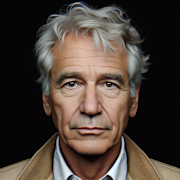Masterpieces of Classic German Silent Cinema: Expressionism Unleashed

Lights, camera, action! The golden era of silent film marked a revolution in storytelling. One of the most influential movements during this time was German Expressionism – an artistic style that merged visual aesthetics with emotional intensity. In this blog post, we will explore some of the masterpieces of Classic German Silent Cinema that exemplify the unleashed power of Expressionism.
1. The Birth of German Expressionism
To truly understand the greatness of German Expressionist films, we must first grasp the historical context of its birth. Emerging in the aftermath of World War I, Germany was mired in a deep sense of despair and disillusionment. Expressionism, as an art movement, became a powerful mode of social and cultural critique against the backdrop of a devastated nation.
2. The Cabinet of Dr. Caligari (1920)
One cannot delve into German Expressionism without mentioning the iconic film, “The Cabinet of Dr. Caligari.” Directed by Robert Wiene, this psychological thriller epitomizes the movement’s aesthetic principles with its distorted sets, jagged shadows, and eerie makeup.
The film follows the story of a somnambulist named Cesare, controlled by the twisted Dr. Caligari, who predicts murders while he sleepwalks. As the narrative unfolds, the boundary between reality and madness becomes increasingly blurred, reflecting the crumbling sanity of post-war Germany.
3. Metropolis (1927)
Fritz Lang’s monumental work, “Metropolis,” is a sci-fi masterpiece that pushes the boundaries of technical innovation and visual storytelling. This epic dystopian tale envisions a futuristic city divided into stark class hierarchies, where the wealthy reside in luxurious skyscrapers while the workers toil underground.
The towering architecture, geometric landscapes, and expert use of lighting contribute to the film’s grandeur, showcasing the dark side of progress and the human spirit. “Metropolis” remains a landmark in cinematic history, influencing countless filmmakers to come.
4. Nosferatu (1922)
As the first adaptation of Bram Stoker’s Dracula, F.W. Murnau’s “Nosferatu” showcases the ingenuity of German Expressionist directors in creating horror films that would endure for generations. The film’s eerie atmosphere is enhanced through its innovative use of shadow and light, amplifying the sense of dread and unease.
Due to copyright issues, the names were altered, but the story remains a haunting tale of Count Orlok’s obsession with the protagonist’s wife, leading to a chilling climax. “Nosferatu” serves as a testament to the lasting power of Expressionism in crafting stories that traverse time and culture.
5. The Last Laugh (1924)
Directed by F.W. Murnau, “The Last Laugh” offers a departure from the Gothic and horror themes commonly associated with German Expressionism. Instead, this psychological drama delves into the subjective experience of an aging hotel doorman who faces professional and personal setbacks.
“The Last Laugh” is notable for its innovative camera techniques, with the camera often serving as the protagonist’s point of view. Through its relentless focus on imagery and symbolism, the film elicits profound empathy and reflection on the human condition.
Unleashing the Power of Expressionism in Cinema
German Expressionism left an indelible mark on the world of cinema, unleashing a new era of creativity and artistic experimentation. Its influence is evident in countless films, from classic masterpieces to contemporary works. By embracing heightened emotions, distorted visuals, and powerful symbolism, directors created a visual language that transcended the limitations of silent film.
As we immerse ourselves in these silent gems, we gain a deeper appreciation for the power of storytelling, even without words. Through the exploration of human emotions and societal critique, German Expressionist films continue to captivate audiences today, reminding us of the boundless possibilities of the cinematic art form.
[SEO: German Expressionism, Classic Silent Cinema, Masterpieces of German Cinema, Silent Film, Expressionist Films]

Desmond van der Walt
Journalist
More From Classics Authority Movies

Movie
Rio Bravo (1959)

Movie
The Conformist (1970)

Movie
Battleship Potemkin (1925)

Movie
Spartacus (1960)

Movie
The Departed (2006)

Movie
Gone With The Wind (1939)





